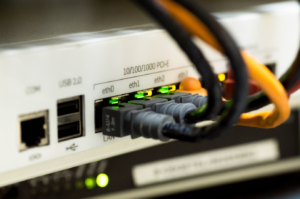Dispatch Services

Need Help Dispatching Your Help?
We Can Help!
Whether you have a security patrol business, courier, trucking, taxi cabs, school buses or any one that needs to stay in touch.
Call For Details:
What Is Radio Over IP?

Radio over Internet Protocol (RoIP) is similar to VoIP technologies being used regularly by thousands of businesses all around the world.
Basically, RoIP technology provides a method of linking multiple radios or repeaters together though an Internet connection. This is known as Site Linking or Point-to-Point linking.
With an added command layer to control basic radio functions such as push-to-talk (PTT) and frequency change, RoIP technology can link different communication devices together in a single network.
What Can RoIP Do For Me?

- Turn your phone into a two way radio! Eliminate the need to carry a radio.
- Communicate securely anywhere! Your communication signal cannot be scanned in a complete ROIP system.
- IP Dispatch or remote base station.
- Allow otherwise incompatible radio systems to communicate seamlessly, sharing a common data connection.
- Push-to-talk for mobile phones and PDAs allowing SmartPhone users to communicate directly with radio users and dispatchers.
The Different Types of RoIP
 The most common form of RoIP is using an internet connection to link two radio sites together. If both sites are already equipped with Internet, this can be a cost-effective solution.
The most common form of RoIP is using an internet connection to link two radio sites together. If both sites are already equipped with Internet, this can be a cost-effective solution.FAQs
 End users can use any communications device they wish including legacy and new radios, analog and digital UHF and VHF radios, analog and digital PBX phones, cell phones, software phones, IP phones, PDAs, and computers. This flexibility allows agencies and individuals that do not use public safety radios to be tied into the emergency communications stream when necessary, whether it is the Mayor, hospitals, public health, the National Guard or an expert that is needed during an emergency event.
End users can use any communications device they wish including legacy and new radios, analog and digital UHF and VHF radios, analog and digital PBX phones, cell phones, software phones, IP phones, PDAs, and computers. This flexibility allows agencies and individuals that do not use public safety radios to be tied into the emergency communications stream when necessary, whether it is the Mayor, hospitals, public health, the National Guard or an expert that is needed during an emergency event.











 Using a P2T app on a cell phone combines the unlimited range and security of a cell phone with the convenience of a two-way radio. A standard two-way radio signal can be intercepted with a common scanner, but a cell phone cannot.
Using a P2T app on a cell phone combines the unlimited range and security of a cell phone with the convenience of a two-way radio. A standard two-way radio signal can be intercepted with a common scanner, but a cell phone cannot. Whether it is a single user controlling a single radio or a full E-911 dispatch center with multiple operators, RoIP connects them to their end users.
Whether it is a single user controlling a single radio or a full E-911 dispatch center with multiple operators, RoIP connects them to their end users. One of the most exciting applications of RoIP technology is its ability to quickly and easily bridge the gap between otherwise incompatible radio systems. Each radio is connected to a universal radio interface via the microphone jack or auxiliary connector.
One of the most exciting applications of RoIP technology is its ability to quickly and easily bridge the gap between otherwise incompatible radio systems. Each radio is connected to a universal radio interface via the microphone jack or auxiliary connector.

 traffic flaggers
traffic flaggers Cost will vary depending on the number and type of devices involved. Call for your free quote and professional consultation. We can answer your questions and help you from start to finish.
Cost will vary depending on the number and type of devices involved. Call for your free quote and professional consultation. We can answer your questions and help you from start to finish.